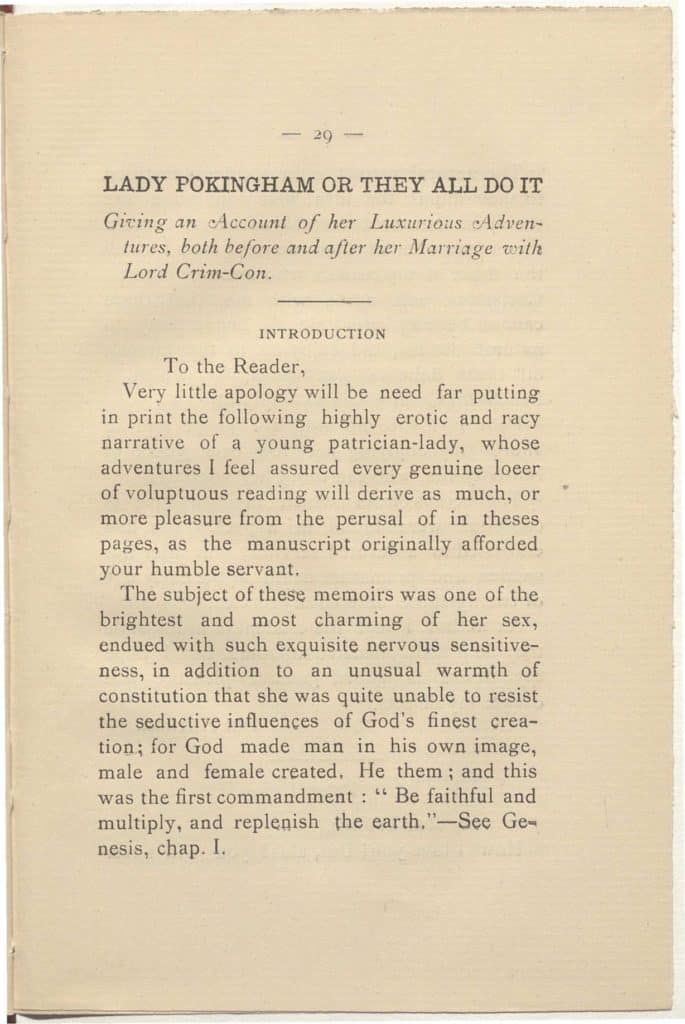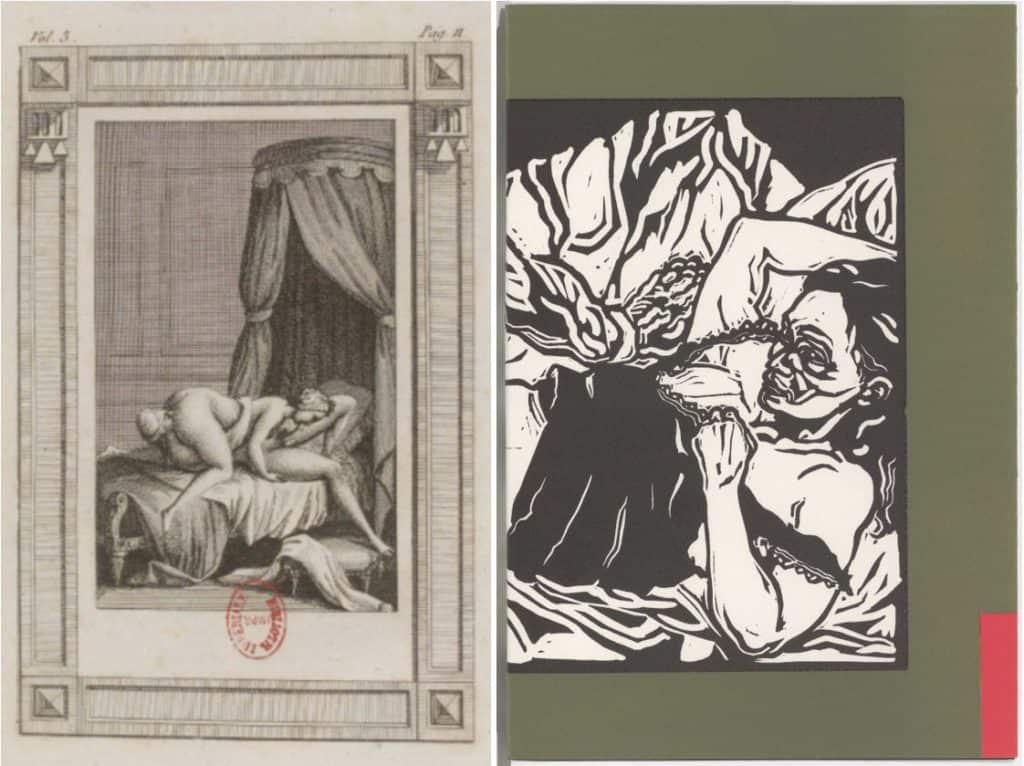|By Rob Youngs do Patrocinio, Gale Ambassador at University College London|
Gale’s rich and exciting archive collection L’Enfer de la Bibliothèque national de France, which is part of Gale’s Archives of Sexuality and Gender series, holds an impressive assortment of approximately 2400 printed works, published mostly in French. Enfer quite literally translates into English as “hell”. The name is remarkable and has certainly contributed to the collection’s historical infamy. When it was opened, the collection was classified and unavailable to the wider public due to its obscene and outlandish nature, and the perceived vulgarity of the content – but perhaps unsurprisingly this only roused interest and curiosity in the collection! Students of today will undoubtedly be equally curious to explore this historically “out of bounds” collection.
The Academic Landscape
Before unearthing the content of this archive, it seems valuable to note what researchers within Gender and Sexuality Studies are typically examining. There are a plethora of Sexuality Studies courses available across the UK, and as a student at UCL, I decided to focus on what students and researchers nearby are studying and researching. Online examples of Sexuality Studies programmes include:
- The MA in Gender, Sexuality and Culture at Birkbeck University, where relevant modules include “Display, Exhibition and Spectacle in London, 1750-1850” and “Exhibiting the Body”.
- The MA in Transnational Queer Feminist Politics with special reference to the Middle East at SOAS University of London. Special focus incorporates a transnational approach and emphasis, specialising in exploring the important links between Sexuality Studies in relation to Gender Studies, in order to promote intersectionality and inclusivity.
- The MSt in Women’s, Gender, and Sexuality Studies at the University of Oxford. This programme includes topic areas such as: “Friendship as a Way of Life: Kinship and the Nature of Queerness” and “Gendered Bodies in Visual Art and Culture”.
Many of these programmes are interdisciplinary and designed to challenge this area of research, and are frequently combined with other areas of Humanities study. As a field of research, there is often a particular focus on developing intersectional approaches to a wide range of socio-cultural phenomena. This also appears to be a growing and evolving area of study, which Gale’s Enfer collection, as well as the other modules in Archives of Sexuality and Gender, could support, by providing students and researchers with easy access to fascinating primary sources.
Exploring Texts in Enfer

The images above are an example of a splendidly bound book titled: Les Délices du cloître, ou la None éclairée, avec un discours préliminaire (1761). It is striking how colourful the front and inside covers are. The vibrancy of the colours shows firstly that significant investment was made when it was produced – and secondly, the fact that it is still in excellent condition highlights that it has been carefully preserved.
Use of Language
Turning to the written content within these titles, it was interesting to examine the use of language. The writing is tremendously distinct which is particularly clear in the novels and stories that are frequently written in a dialogue form, whilst using rich language that is both impish and humorous. Furthermore, fantasy is an important literary element and constant feature that brings this collection together, and is apparent in all the fantastical tales and obscurities penned.
The Pearl: a journal of facetiæ and voluptuous reading (1879-1880), below, promises a “highly erotic and racy narrative of a young patrician-lady”! The following excerpt introduces the subject of the story:

Use of Illustrations
From the beginning of the eighteenth century onwards, the published works in this collection become increasingly packed with graphic artwork, which adds a new dimension to these explorations of sex and morality. It is sometimes the images as much as the text that are the most shocking. The unorthodox and pornographic illustrations below are two examples of the types of images that can be found in Enfer.

Right: Petrópoulos, Ilías. In Berlin: notebook 1983-1984 / Elias Petropoulos; illustrated by Michael Bastow; translated by John Taylor. Translated by John Taylor, illustrated by Michael Bastow, [E. Petropoulos], 1987. Archives of Sexuality and Gender, https://link.gale.com/apps/doc/HMRXWL173046057/AHSI?u=ucl_ttda&sid=bookmark-AHSI&xid=615c77dc&pg=1
My Interactions with L’Enfer de la Bibliothèque Nationale de France
I have found navigating this archive to be an interesting adventure. Enfer strikes me as being exceptional in its unreserved boldness, with primary sources that often invoke reactions of startlement and surprise. Yet, after the initial shock, I found the collection to be illuminating in terms of our cultural understanding of sexuality and sexual histories especially as it is such a vast collection, spanning many centuries, and thus the development of ideas and trends can be traced over time.
In my opinion, this lively collection is valuable to researchers as it is provocative, and challenges even the modern reader to question their own socio-cultural perceptions in regard to sex and its boundaries of acceptability. In many aspects, this unique collection was ahead of its time as there is a daring element that captivates the attention of the reader from start to finish. Moreover, it is clear that these published works are interesting in their explorations of the carnal and lewd imagination which at times even border the disturbing! Certainly, it seems to me that there is an element of deviant play and romping fun in these illicit works, as although the authors, illustrators, and publishers historically risked prosecution and punishment – the forbidden and taboo subject of sex was, and continues to remain, tantalising and tempting enough to dare clandestine exploration! Despite the age of much of the content, this collection is timelessly young and will appeal to those of you who dare to push the limitations of traditional research and question both our understanding of what is deemed acceptable in contrast to the obscene. Is it love or lust, moral or perverse? Whatever it is, this collection will get you thinking – there is something for everyone – or at least those of you daring enough to venture into the depths of this Enfer!
If you enjoyed reading a student’s perspective on Gale’s Enfer collection, or are interested in Sexuality Studies more generally, you might also like:
- Exploring Early Modern Erotica and Social History in L’Enfer de la Bibliothèque nationale de France
- Exploring Twentieth-Century Art and Social History in Erotica in L’Enfer de la Bibliothèque nationale de France
- Exploring the collections in Gale’s Sex and Sexuality, Sixteenth to Twentieth Century archive
Blog post cover image citation: Bookcase of old books by Clarisse Meyer, available on Unsplash.com

